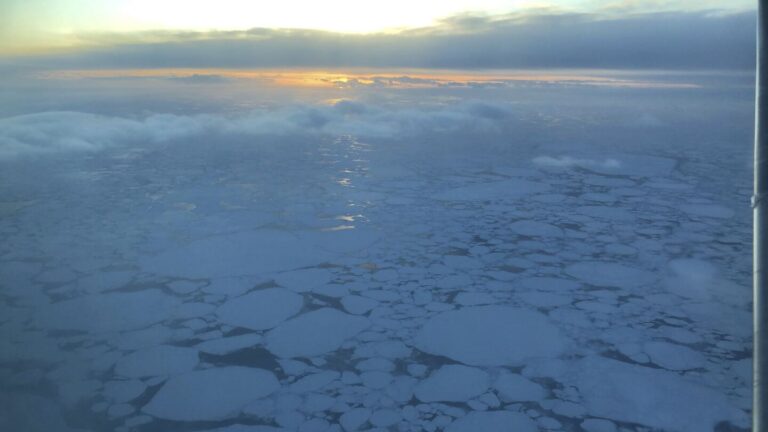Searchers in Alaska Scour Frozen Tundra and Icy Seas for Missing Plane with 10 Aboard
In a dramatic race against time, rescue teams are scouring the vast frozen tundra and icy waters of Alaska to locate a missing plane carrying ten people. This incident has raised significant concerns about safety measures in aviation, especially in remote areas where weather conditions can change abruptly. The search efforts, which began shortly after the aircraft went missing, have revealed a series of challenges that highlight the complexities of rescue operations in Alaska’s unforgiving environment.

A Challenging Search Environment
Alaska, known for its stunning natural beauty and rugged terrain, presents unique obstacles for search and rescue missions. With approximately 663,300 square miles of land—close to twice the size of Texas—the search teams face significant difficulties in both logistics and timing. The state has roughly 3,000 miles of coastline, much of it frigid and covered in ice, as the late autumn season gives way to winter conditions. These factors complicate aerial and ground searches, particularly with low visibility and harsh weather.
Statistics show that Alaska accounts for approximately 5% of U.S. aviation accidents, despite having only about 1.5% of the nation’s air traffic. This exemplifies how the unique conditions in the region can present heightened risks for pilots.
The Aircraft and Its Last Known Location
The missing aircraft was reported to be a small passenger plane that had taken off from a remote Alaskan community. Local authorities initially received a distress signal, but as hours turned into days, hopes for a quick resolution began to dwindle. Authorities released information that the last known position of the aircraft had been tracked to a location near the icy Bering Sea, another factor complicating the search due to rapidly changing sea conditions.

Search and Rescue Operations
Search operations have involved multiple agencies, including the U.S. Coast Guard, local volunteers, and specialized search teams. Using aerial surveillance drones, helicopters, and boats, search crews have covered several hundred square miles. Unfortunately, the harsh climate continues to hinder progress, with temperatures plummeting to well below freezing.
Recent statistics indicate that over 1,000 aircraft go missing in Alaska each year; however, most are found relatively quickly due to community networks and the use of advanced technology. In this instance, the vast, isolated terrain has proven a significant obstacle.
Community Efforts and Resources
The local Alaskan communities have rallied together, providing invaluable support in the search efforts. Many residents are familiar with the rugged landscape, offering their knowledge to help guide searchers through challenging terrains. Additionally, social media platforms have been instrumental in disseminating information, creating awareness, and rallying volunteers to assist in the search.
Alaskan residents, who often rely on aviation for transportation, have expressed their heartfelt concern for those missing. Community members are known for their resilience and solidarity in tough times, which has fostered a spirit of cooperation among search and rescue teams.

Challenges of Winter Weather
As winter approaches, the emphasis on safe flying conditions increases. Alaska experiences over 300 days of cloud cover per year in some regions, which can obscure visibility and complicate rescue operations. Furthermore, freezing temperatures can affect search equipment, particularly helicopters and drones which struggle with battery life and performance in extremely cold conditions.
According to the National Transportation Safety Board (NTSB), over 65% of general aviation accidents in Alaska involve weather factors. This stark fact underscores the importance of situational awareness and the need for proper pilot training focused on Alaska’s unique flying conditions.
Conclusion: Hope Amidst Uncertainty
As searchers continue their efforts in the frozen tundra and icy seas, families and communities are left exchanging hope amidst uncertainty. The search for the missing plane with ten people aboard serves as a reminder of the risks associated with aviation in Alaska. The dedication of rescue teams and the strength of local communities reflect the resilience of those who live and work in one of the most beautiful yet perilous environments on Earth.
As we await further developments in this tragic situation, it’s a poignant reminder of the responsibilities involved in aviation, particularly in challenging regions. The ongoing search efforts highlight the importance of robust safety protocols and community cooperation in the face of adversity.



